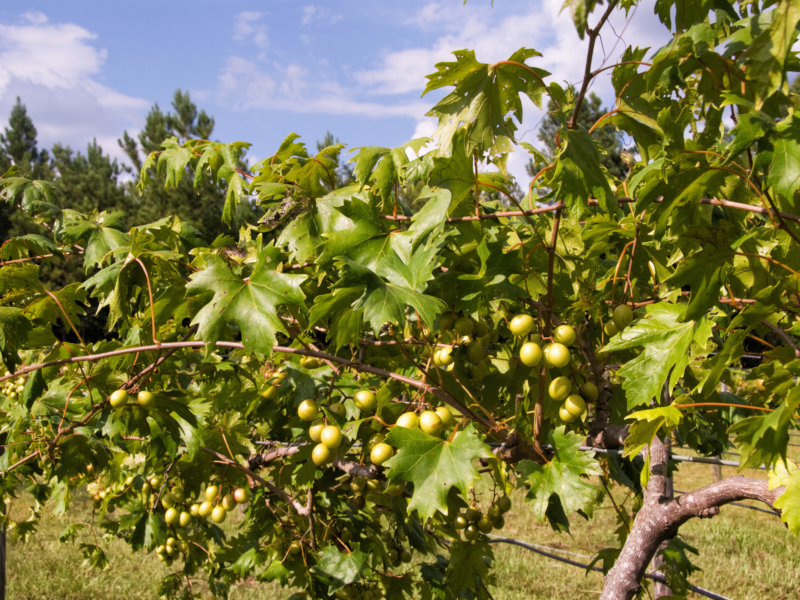Calling all grape lovers! Muscadine grape season is here, and it doesn’t last long. Muscadine grapes, sometimes called scuppernongs, are an old Southern favorite that can be harvested throughout September and October. The muscadine variety of grapes are low-maintenance, can grow as big as golf balls, and taste delicious. Keep reading to learn more about muscadine grapes to get the most out of this grape season!
Growing Muscadine Grapes
Muscadine grapes, and grapes in general, are easy to care for and actually thrive with little care. The most important thing to remember is that grape vines need to be trained to a trellis, arbor, or even just a post and wire setup in order to produce fruit. Grape vines are a stunning addition to any landscape and require little care for once they’re established. Rich, sandy or clay loam soils are preferred by grape vines, and some varieties of female grape vines need a self-pollinating grape vine to fruit. For more information on growing muscadine grapes, check out our Growing Guide here.
Muscadine Grape UsesÂ
Be grape-ful if you’re lucky enough to harvest your own muscadine grapes this season because they can be used in countless recipes, including both sweet and savory dishes! Using muscadine grapes in a pie is a common way to enjoy these juicy fruits. They can also be turned into grape jam or jelly for tasty peanut-butter-and-jelly sandwiches. If you’re looking for a new project and have some fresh muscadine grapes on hand, try turning them into wine. It may be the most time-consuming way to use your grapes, but tasting the finished product is rewarding! For a non-alcoholic way to drink your muscadine grapes, make grape juice.
There’s nothing like walking out to your orchard to find a vine full of grapes! Grape season doesn’t last very long, so make sure to enjoy your fresh grapes while you can. To learn more about our selection of grape trees and other fruit trees, visit our website or give us a call!

